Bucharest, the capital of Romania, is home to a diverse range of bird species. The city is located in the middle of the vast plain of the Romanian meadow and is surrounded by a variety of habitats, including wetlands, forests, and agricultural fields.
This variety of habitats provides a great opportunity for birding enthusiasts to observe a wide range of species. Common species found in Bucharest include the Eurasian Blackbird, Common Starling, Great Spotted Woodpecker, and Common Moorhen.
The city is also home to many migrating species, such as the White Stork and Eurasian Hobby, which make brief stops in Bucharest during their migratory journeys.
Birders can also find a variety of rarer species such as the Red-footed Falcon, White-tailed Eagle, and Great Grey Shrike. With so many species to observe, Bucharest is a great destination for bird watchers of all levels.
1. Gull-billed Tern
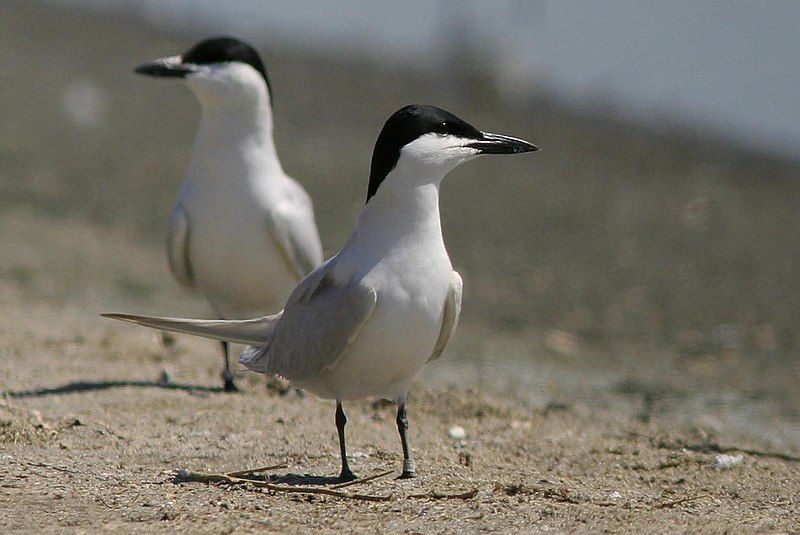
The gull-billed tern is a species of tern belonging to the family Laridae. This species is widely distributed and can be found in various parts of Europe, Asia, northwest Africa, and the Americas.
The Australian gull-billed tern was previously considered to be a subspecies of this species, however, it is now recognized as its own species. This species is characterized by its white plumage with black tips on its wings, its long, slender wings, and its long, heavy bill.
Its bill is well adapted for catching and eating fish, which is its primary food source.
The gull-billed tern is an opportunistic feeder and will also consume other small creatures such as insects, mollusks, and crustaceans.The gull-billed tern prefers to nest in open, grassy areas near water, such as mudflats, sandbanks, and salt marshes.
They usually build their nests on the ground, but may also use vegetation or man-made structures. They usually lay two to three eggs in a single clutch. The gull-billed tern is a shy and wary species and can become easily disturbed by human activity.
It is listed as near threatened by the International Union for Conservation of Nature due to its small population size and the threats to its habitat from human activities, such as urbanization. Conservation efforts have been set up to help protect this species and its habitat.
| Kingdom | Animalia |
| Phylum | Chordata |
| Class | Aves |
| Order | Charadriiformes |
| Family | Laridae |
| Genus | Gelochelidon |
| Species | G. nilotica |
2. Eurasian Scops Owl
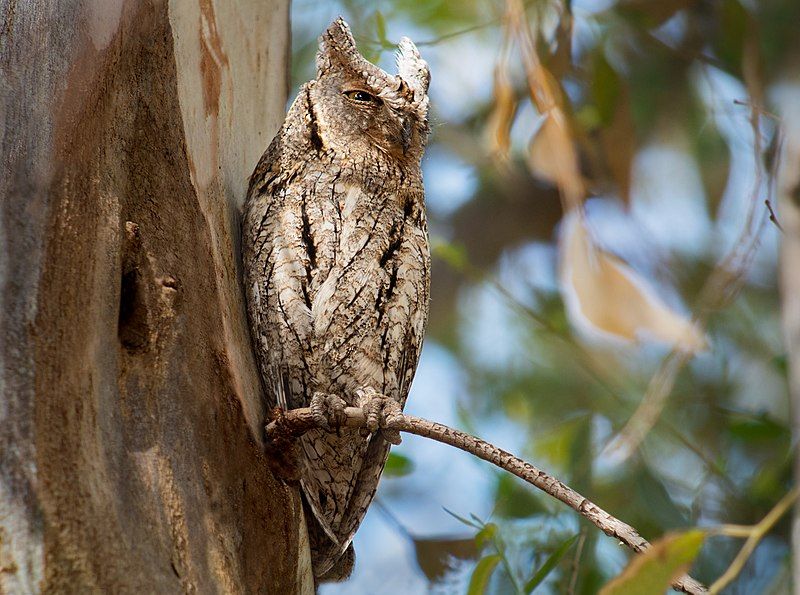
The Eurasian scops owl is a small bird that belongs to the Strigidae family, also known as the typical owl family. It is found in a wide range of habitats, ranging from southern Europe to southern Siberia and the western Himalayas.
During the winter months, the scoop owl migrates to Africa south of the Sahara, where it can find warmer climates and more abundant food sources. It is a solitary bird, usually found roosting in trees and generally prefers to hunt at night.
Its diet consists mainly of insects, but it also eats small birds, lizards, and rodents. The Eurasian scops owl has distinctive feathers, with a greyish-brown back, white throat, and yellow facial disc.
It is a vocal bird, often emitting a high-pitched “hoo” call that can be heard during the night. Additionally, it is an important indicator species for the health of its habitat, as it is sensitive to environmental changes.
| Kingdom | Animalia |
| Phylum | Chordata |
| Class | Aves |
| Order | Strigiformes |
| Family | Strigidae |
| Genus | Otus |
| Species | O. scops |
3. Eurasian Blue Tit
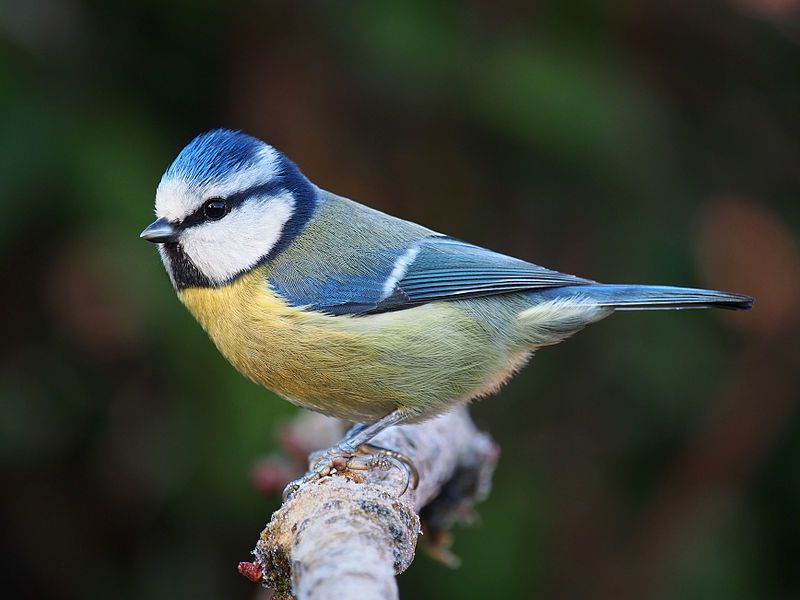
The Eurasian blue tit is a small, colorful bird that is part of the Paridae family. Its distinguishing features are its bright blue and yellow plumage, as well as its small size. The bird is relatively small, measuring around 12-14 cm in length and 15-20 g in weight.
Its bright blue feathers cover its upper parts, while its underparts are marked with yellow. The blue tit also possesses a white face with a black crown and a black eye stripe. This species of bird is found throughout Europe and parts of western and central Asia.
It is a very active species, often flitting from tree to tree in search of food. Its diet mainly consists of insects, spiders, and other invertebrates, as well as seeds, nuts, and fruits.
It is also known to be an adept acrobat, often hanging upside down in order to feed on insects that are located beneath tree bark. The Eurasian blue tit is an adaptable and hardy species, making it an ideal bird for backyard birdwatchers to observe.
| Kingdom | Animalia |
| Phylum | Chordata |
| Class | Aves |
| Order | Passeriformes |
| Family | Paridae |
| Genus | Cyanistes |
| Species | C. caeruleus |
4. Common Tern
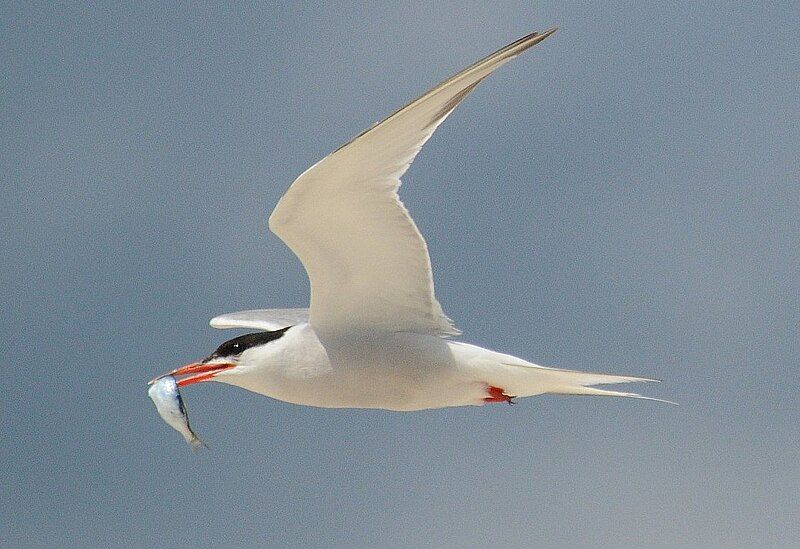
The common tern is a seabird, meaning it lives in and around bodies of water. It is part of the family Laridae, which includes gulls, skimmers, and more.
This bird has a wide range of habitats, as it is found circumpolar – meaning it is found in or around the North and South poles. Its four subspecies are distributed throughout temperate and subarctic regions of Europe, Asia, and North America.
This bird is strongly migratory, meaning it will often fly south for the winter. In particular, it will fly to coastal tropical and subtropical regions during the colder months.
This gives the common tern a wide range of habitats and adaptability that allows it to thrive despite the changing seasons.
| Kingdom | Animalia |
| Phylum | Chordata |
| Class | Aves |
| Order | Charadriiformes |
| Family | Laridae |
| Genus | Sterna |
| Species | S. hirundo |
5. Common Cuckoo
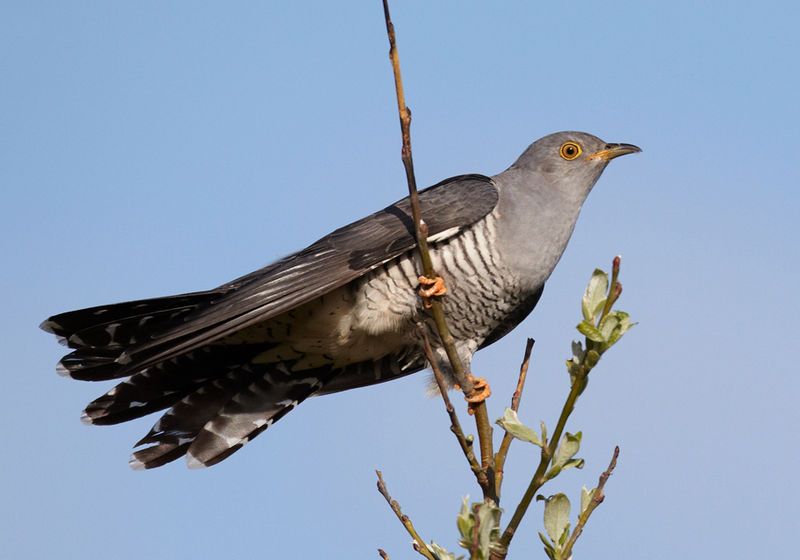
The common cuckoo is a species of bird belonging to the Cuculiformes order, which is made up of a variety of species such as roadrunners, anis, and coucals. It is a widespread summer migrant, meaning it travels to different regions during the summer months.
The cuckoo typically migrates to Europe and Asia during the summer, and then travels to Africa for the winter. This species is known for its distinctive call, which can be heard during the summer months in many parts of the world.
The common cuckoo is one of the most widespread species of birds in the world, and its migratory behavior is an incredible phenomenon that has been studied for centuries.
| Kingdom | Animalia |
| Phylum | Chordata |
| Class | Aves |
| Order | Cuculiformes |
| Family | Cuculidae |
| Genus | Cuculus |
| Species | C. canorus |
6. Cormorants
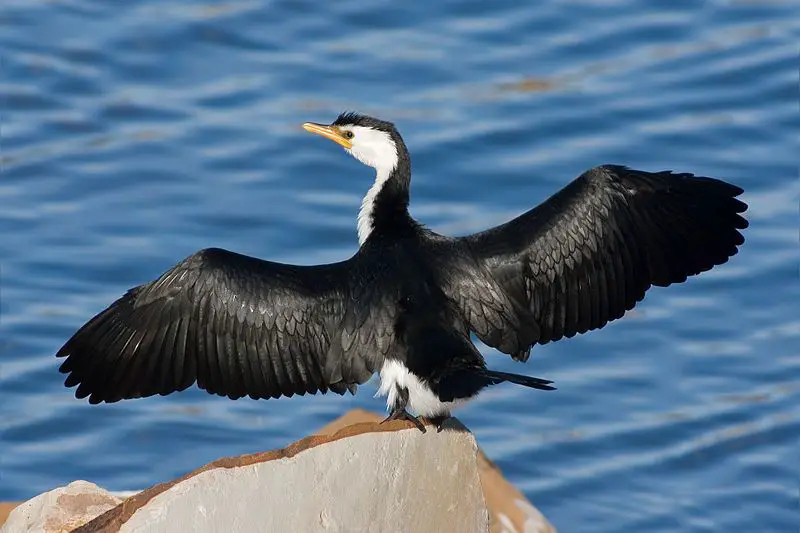
Phalacrocoracidae is a large family of aquatic birds, including both cormorants and shags. The family is made up of around 40 different species, spread across seven genera. This taxonomic classification was recently updated in 2021 by the International Ornithologists’ Union.
This organization is dedicated to the research and understanding of bird species, and their consensus taxonomy provided an important update to the classification of the Phalacrocoracidae family.
The updated taxonomy has been accepted by ornithologists around the world and provides an important framework for understanding and studying these aquatic birds.
With the help of the International Ornithologists’ Union, researchers can now better understand the various species that make up the Phalacrocoracidae family.
| Kingdom | Animalia |
| Phylum | Chordata |
| Class | Aves |
| Order | Suliformes |
| Family | Phalacrocoracidae |
7. Collared Pratincole
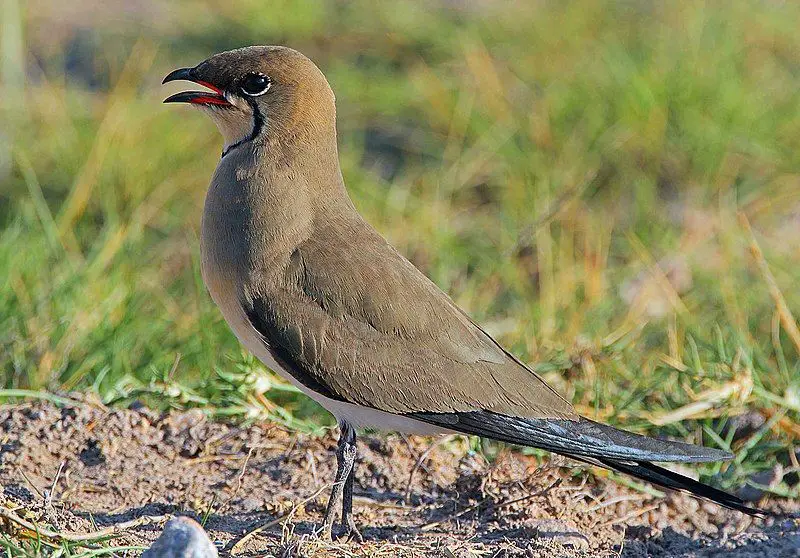
The collared pratincole is a wading bird in the pratincole family, Glareolidae. It is also referred to as the common pratincole or red-winged pratincole, due to the distinctive red markings on its wings.
This species is native to the Old World, meaning that it is found in Europe, Africa, and Asia. This species is most commonly found in dry, open grasslands, often near bodies of water.
The collared pratincole is a medium-sized bird, measuring from 22-29 cm in length and weighing between 40-80 g. Its bill is long and slender, and its plumage is mainly grey or brown. It has a white rump and the distinctive red markings on its wings.
In flight, its wings are long and pointed. The collared pratincole feeds mainly on flying insects, such as flies, beetles, and moths. It often hunts in flocks, chasing its prey in mid-air. It nests on the ground, usually in shallow depressions lined with dry grass.
It lays a clutch of two to four eggs, which are incubated by both parents for around 21 days. The collared pratincole is listed as a near-threatened species by the IUCN, due to its rapidly declining population.
Many of the birds are killed during migration, and their habitats are also being threatened by agricultural activities and urbanization. Conservation efforts are being taken to protect this species and its habitats.
| Kingdom | Animalia |
| Phylum | Chordata |
| Class | Aves |
| Order | Charadriiformes |
| Family | Glareolidae |
| Genus | Glareola |
| Species | G. pratincola |
8. Ferruginous Duck
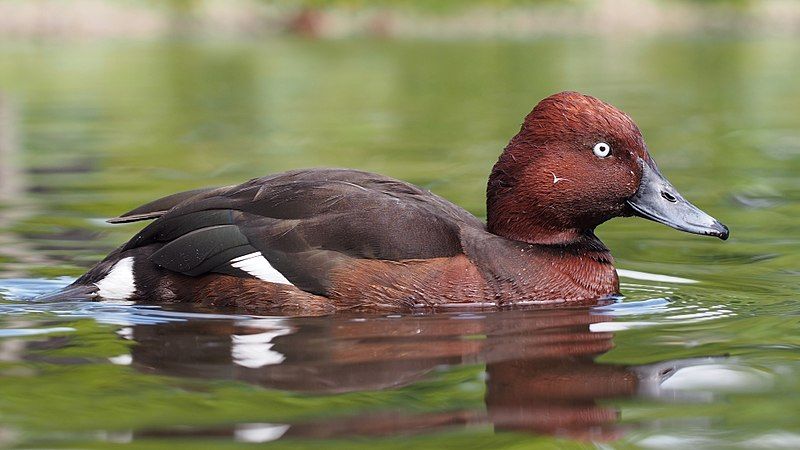
The Ferruginous Duck is a medium-sized diving duck from Eurosiberia, and it is also known as the ferruginous pochard, common white-eye, or white-eyed pochard. This species of duck has an interesting scientific name, which is derived from Greek words.
The first part of the name, “aithuia”, comes from two ancient Greek authors, Hesychius and Aristotle. Both of these authors wrote about an unidentified seabird in their works, and this is where the first part of the scientific name comes from.
The second part of the name, “nyrok”, is the Russian word for duck. Therefore, the scientific name for the Ferruginous Duck is a combination of Greek and Russian, which makes sense given the species’ geographical location in Eurosiberia.
| Kingdom | Animalia |
| Phylum | Chordata |
| Class | Aves |
| Order | Anseriformes |
| Family | Anatidae |
| Genus | Aythya |
| Species | A. nyroca |
9. Common Swift
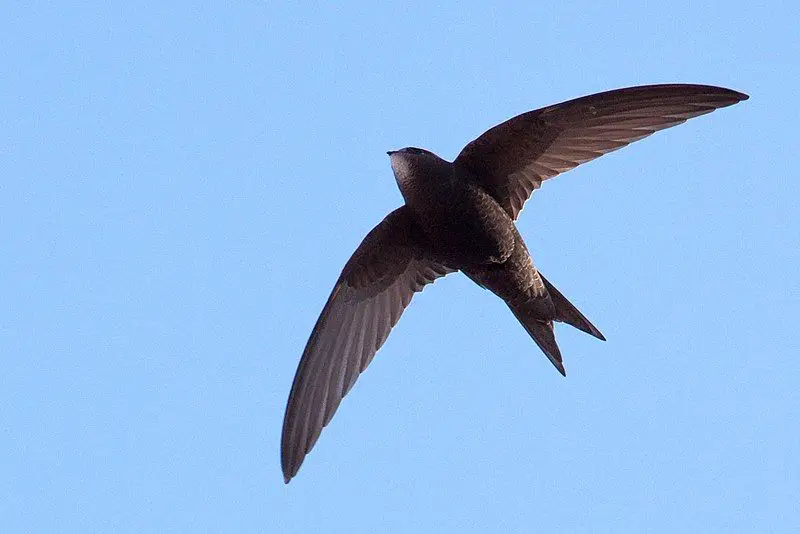
The common swift is a medium-sized bird that is not related to the barn swallow or house martin, despite resembling them physically. This is because the common swift is part of the order of Apodiformes, while the barn swallow and house martin are members of the passerine species.
The similarities between these species are due to convergent evolution, which is a process of evolution in which similar traits develop among unrelated or distantly related species due to them adapting to similar environments or habitats.
This means that although the common swift the barn swallow and the house martin are not closely related, they have developed similar physical traits as a result of living in similar contexts.
| Kingdom | Animalia |
| Phylum | Chordata |
| Class | Aves |
| Clade | Strisores |
| Order | Apodiformes |
| Family | Apodidae |
| Genus | Apus |
| Species | A. apus |
10. Great White Pelican
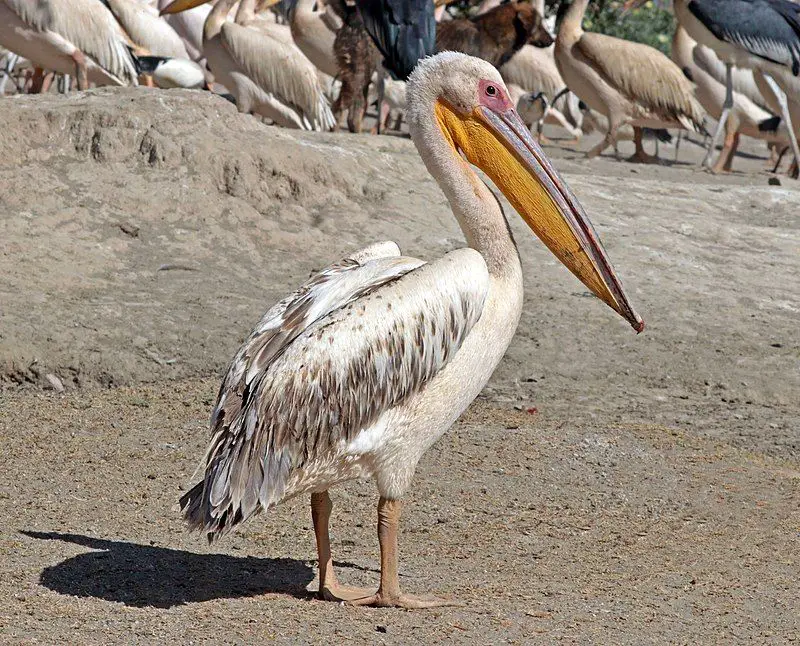
The great white pelican, also known as the eastern white pelican, rosy pelican, or white pelican, is a large bird found in the pelican family. It is a majestic bird, with white feathers and a large yellow bill.
It is the largest of all the pelicans and can have a wingspan of up to nine feet. This species of pelican is found in a wide range of habitats, including from southeastern Europe through Asia and Africa.
It can be seen in swamps, shallow lakes, rivers, estuaries, and coastal areas.
It is a highly social bird, and often breeds in large colonies, sometimes containing thousands of birds. The great white pelican is a carnivorous bird and usually feeds on fish, frogs, and other aquatic animals.
It has a unique way of fishing, in which it forms a line, with the birds in the front, and dives into the water to catch prey. It also also known to scavenge food from other birds. The great white pelican is a migratory bird, and its migratory routes vary depending on the region.
During their migrations, they can fly thousands of miles and can be seen in large groups in the sky. The great white pelican is an important species to many ecosystems, and its conservation is important in order to maintain healthy populations.
It is currently listed as a species of least concern by the International Union for Conservation of Nature.
| Kingdom | Animalia |
| Phylum | Chordata |
| Class | Aves |
| Order | Pelecaniformes |
| Family | Pelecanidae |
| Genus | Pelecanus |
| Species | P. onocrotalus |
11. Eurasian Golden Oriole
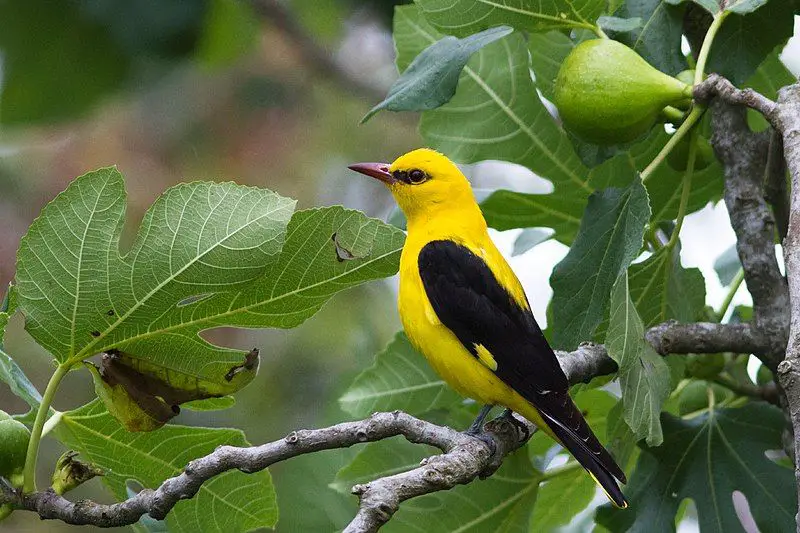
The Eurasian golden oriole, also known as the common golden oriole, is a species of passerine bird belonging to the Old World oriole family. It is native to temperate regions of the Northern Hemisphere and is a summer migrant in Europe and Palearctic.
During the winter season, the Eurasian golden oriole migrates to central and southern Africa. The Eurasian golden oriole is a medium-sized bird, measuring around 20 cm in length. The males have bright yellow plumage, while the females are mostly olive in color.
The birds have a distinctive, melodious song that is often heard during the breeding season. They mainly feed on insects, fruits, and nectar. The Eurasian golden oriole is widely distributed across Europe and Asia.
It can be found in woodlands, parks, gardens, and other habitats with trees and shrubs. Breeding usually takes place during the spring, when the birds form monogamous pairs. Both parents take part in the construction of the nest, which is made of twigs and grass.
The female lays three to five eggs, which are incubated for 12-14 days. The chicks are fed by both parents until they are able to leave the nest. The Eurasian golden oriole is a common species with a large global population.
It is considered to be of least concern by the International Union for Conservation of Nature. Although its population is stable, habitat destruction and changes in land use may pose a threat to its future.
| Kingdom | Animalia |
| Phylum | Chordata |
| Class | Aves |
| Order | Passeriformes |
| Family | Oriolidae |
| Genus | Oriolus |
| Species | O. oriolus |
12. Black Stork
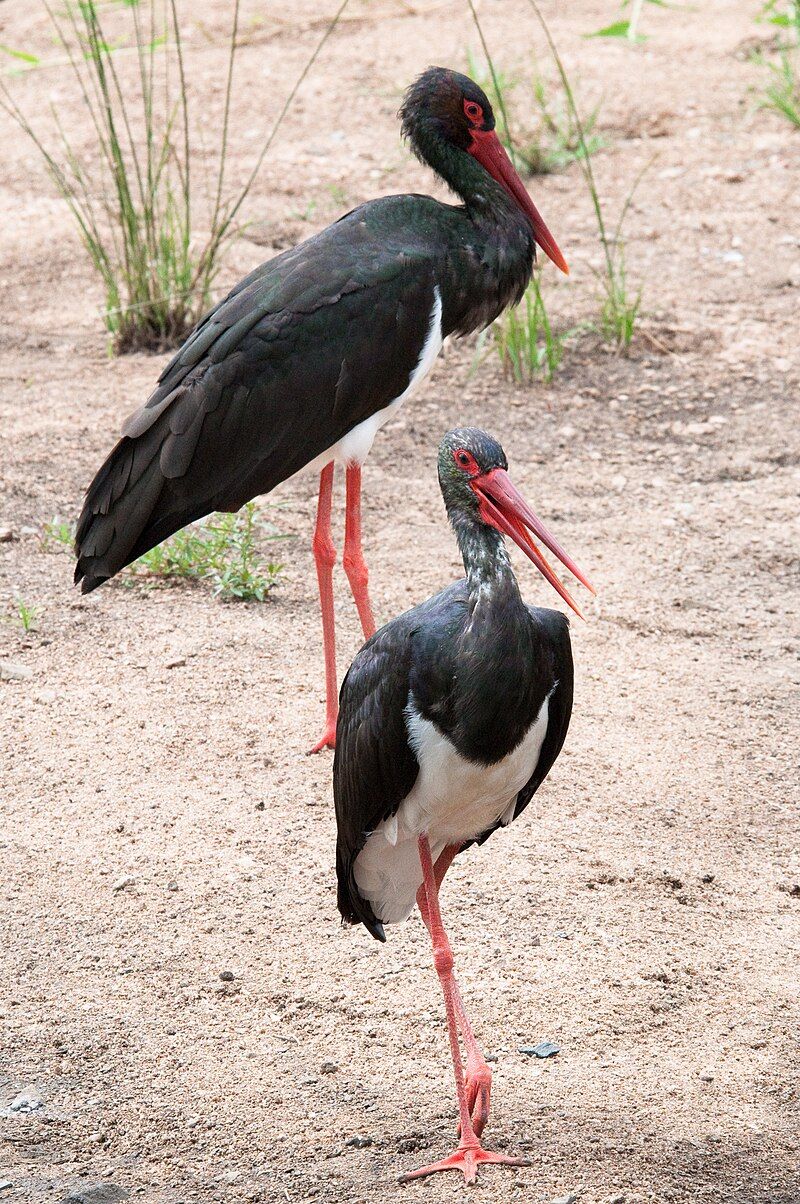
The black stork is a species of stork, belonging to the Ciconiidae family. It was first documented by Carl Linnaeus in 1758, in his publication of the 10th edition of Systema Naturae.
The black stork is a large bird, with males reaching a body length of up to 70 centimeters and a wingspan of nearly two meters. The plumage is mostly black with white patches on the wings and tail, and the bill and legs are red.
The black stork is found in wetlands and rivers in Europe, North Africa, and some parts of Asia. It is an omnivorous species, mainly feeding on fish, amphibians, insects, and small mammals.
The black stork is a migratory bird, with some populations flying south during the winter months and returning to their breeding grounds in the spring. The species is listed as Vulnerable by the IUCN due to habitat loss and degradation, as well as hunting and trapping.
Conservation efforts are being undertaken to protect the species and its habitat, including habitat restoration and protection of its foraging and nesting sites.
| Kingdom | Animalia |
| Phylum | Chordata |
| Class | Aves |
| Order | Ciconiiformes |
| Family | Ciconiidae |
| Genus | Ciconia |
| Species | C. nigra |
13. Black-winged Stilt
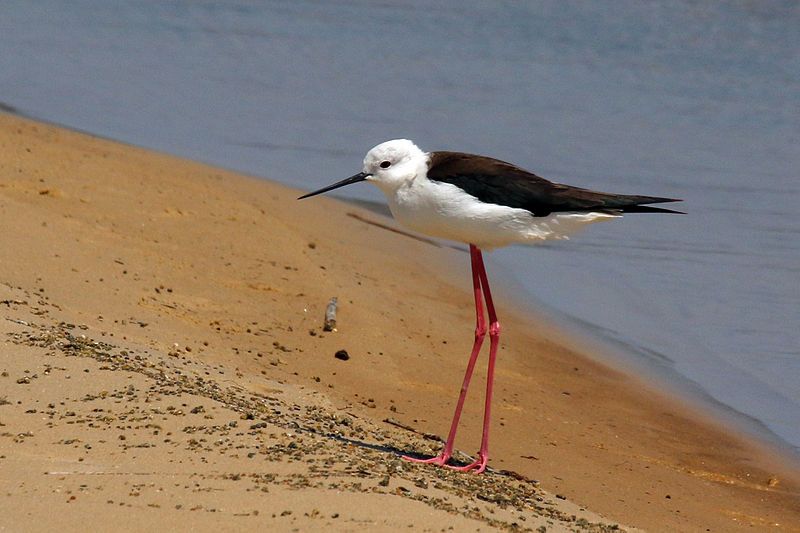
The black-winged stilt is a type of bird found across a wide range of habitats. It belongs to the avocet and stilt family and is easily identified by its very long legs. It has a scientific name of H. himantopus, and it is considered to be a single, almost cosmopolitan species.
This means that the black-winged stilt is found in many different regions and countries around the world, although it may vary slightly in coloration or size between locations.
The black-winged stilt is a fairly common bird, inhabiting wetlands, estuaries, and other aquatic habitats. It can be seen on the edges of lakes, ponds, and rivers, and in open fields. It feeds mainly on aquatic invertebrates, small fish, and insects.
Its long legs make it an adept wader, and it is often seen along the shoreline, probing in the mud and shallow waters for food.
During the breeding season, the male black-winged stilt may display an impressive courtship dance, which involves taking off and flying in circles above its chosen mate, while calling out and fluttering its wings.
The black-winged stilt is an important species, and its conservation is important for the health of wetlands and other aquatic habitats.
| Kingdom | Animalia |
| Phylum | Chordata |
| Class | Aves |
| Order | Charadriiformes |
| Family | Recurvirostridae |
| Genus | Himantopus |
| Species | H. himantopus |
14. White Stork
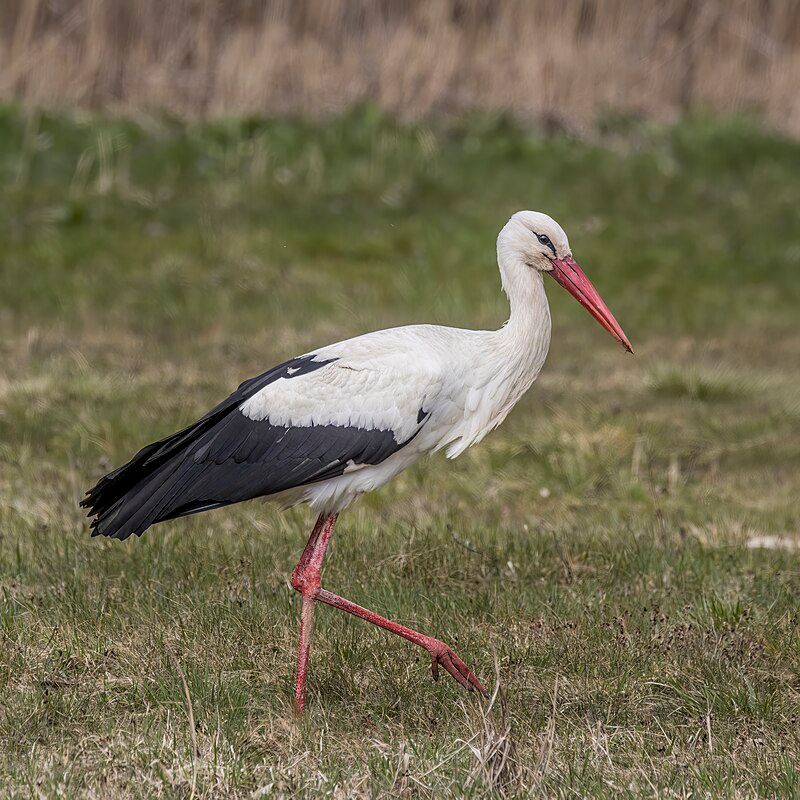
The white stork is a majestic bird that belongs to the Ciconiidae family. It has a stunningly white plumage, with its wings being black in color. This bird is known for its long red legs and sharp pointed red beak.
It is a large bird and can measure up to 100 – 115 cm from its beak tip to the end of its tail. Its wingspan is even more impressive, measuring up to 155 – 215 cm. This bird is usually seen in the warmer regions of the world, like Europe, Africa, and also parts of Asia.
It is usually found near waterbodies, like rivers and lakes, where it finds plenty of food. The white stork is a beautiful bird that stands out in the landscape.
| Kingdom | Animalia |
| Phylum | Chordata |
| Class | Aves |
| Order | Ciconiiformes |
| Family | Ciconiidae |
| Genus | Ciconia |
| Species | C. ciconia |
15. Whiskered Tern
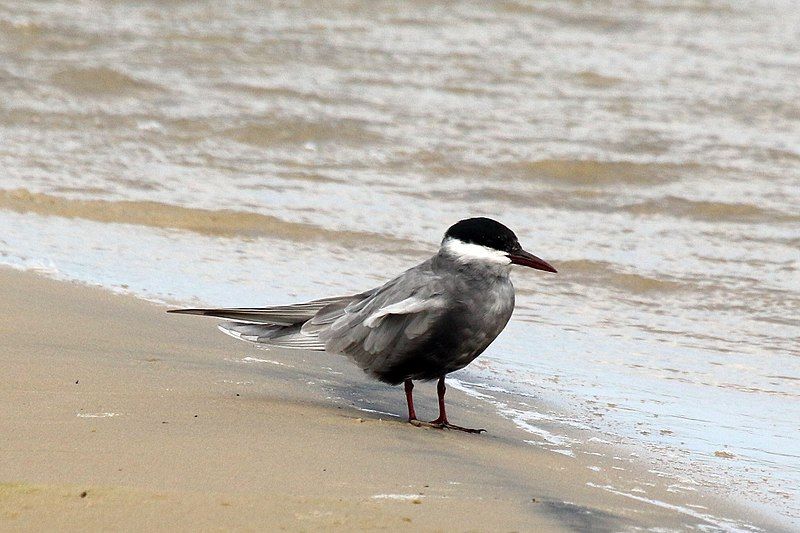
The whiskered tern is a species of tern that belongs to the family of birds known as Laridae. This species is found in many parts of the world, including Africa, Asia, Europe, and Australasia.
The genus name for this species is derived from Ancient Greek, with the word khelidonios, meaning “swallow-like”. This is derived from the Ancient Greek word khelidon, meaning “swallow”.
This name is likely due to the fact that the whiskered tern looks similar to the swallow species, with its slender body and pointed wings. The whiskered tern also has a distinctive black stripe on its head that resembles a mustache, hence the name.
This species is a strong flyer and can be found in a variety of habitats, from coastal regions to inland wetlands. It feeds mainly on small fish, aquatic insects, and crustaceans.
The whiskered tern is an important part of the ecosystem, as it helps to maintain the balance of the food web by preying upon smaller species.
| Kingdom | Animalia |
| Phylum | Chordata |
| Class | Aves |
| Order | Charadriiformes |
| Family | Laridae |
| Genus | Chlidonias |
| Species | C. hybrida |
16. Black-headed Gull
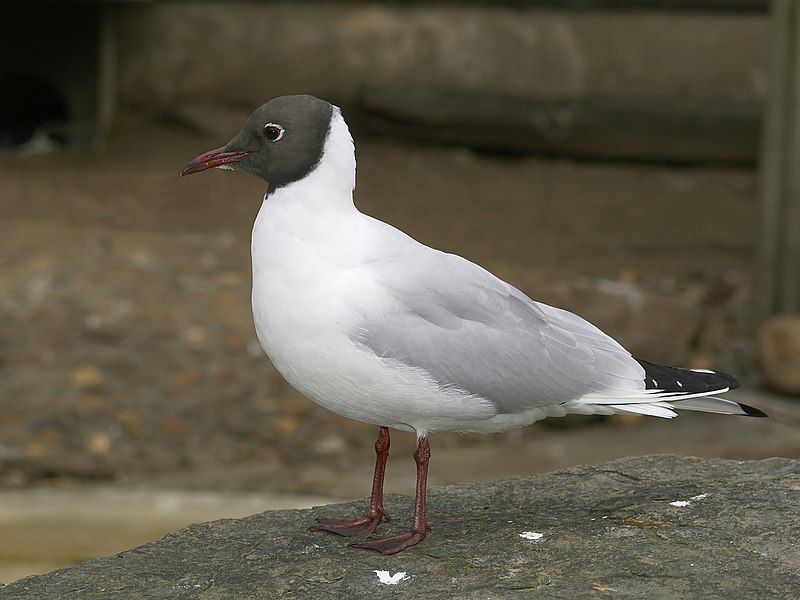
The black-headed gull is a species of small gull that is found in many parts of the Palearctic region, including Europe and Canada.
The majority of the population of this species is migratory, which means that they travel to warmer climates during the winter, but there are some individuals that stay put in the milder areas of Europe.
This species is adaptive, as it can survive in both colder and warmer climates. The black-headed gull breeds in colonies, which can be found near the coast or on inland lakes.
The gulls will nest on the ground in sheltered locations, and they will often forage for food in the surrounding area. The diet of the black-headed gull consists of small fish, crustaceans, and insects. They are also known to feed on the eggs and young of other birds.
During the breeding season, the adult gulls are easily identified by their black heads, which contrast with their pale grey wings and white bodies.
| Kingdom | Animalia |
| Phylum | Chordata |
| Class | Aves |
| Order | Charadriiformes |
| Family | Laridae |
| Genus | Chroicocephalus |
| Species | C. ridibundus |
17. Syrian Woodpecker
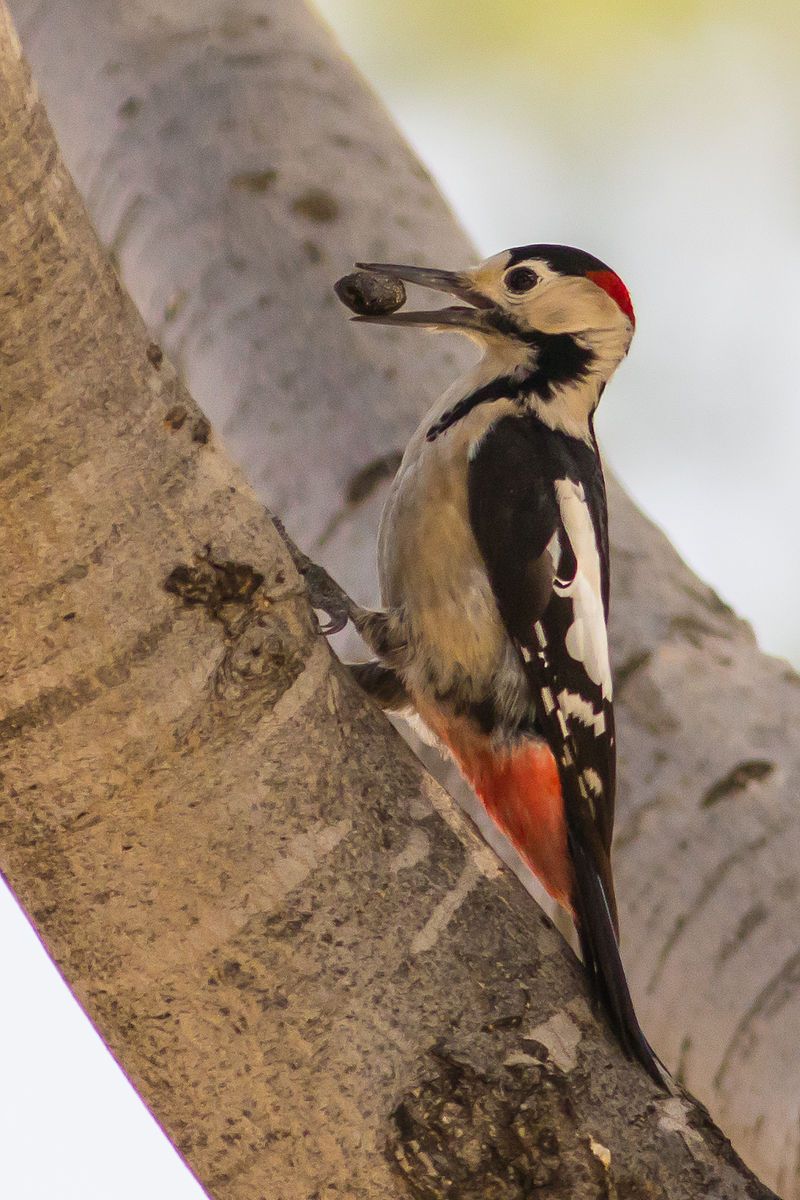
The Syrian woodpecker is an important member of the Picidae family, a group of birds that are found around the world. This species of woodpecker is native to Syria and is typically found in deciduous and mixed forests.
It is known for its distinctive black and white plumage, which helps to distinguish it from other woodpeckers. The Syrian woodpecker is a medium-sized bird, typically measuring about 12 inches in length.
It has a pointed bill and a long tail, which it uses to support itself when climbing trees. Its diet consists mainly of insects and larvae, which it finds by tapping on trees.
The Syrian woodpecker is an essential part of the local ecosystem, helping to keep the insect population in check. It is also an important part of the local culture, with many Syrian folk tales featuring woodpeckers.
Overall, the Syrian woodpecker is a vital member of the Picidae family and an important part of the local ecosystem and culture.
| Kingdom | Animalia |
| Phylum | Chordata |
| Class | Aves |
| Order | Piciformes |
| Family | Picidae |
| Genus | Dendrocopos |
| Species | D. syriacus |
18. Purple Heron
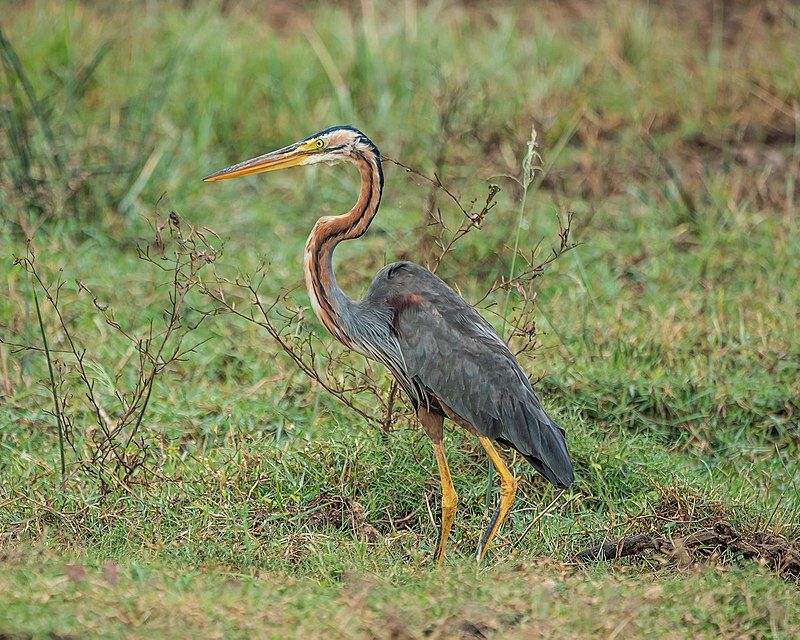
The purple heron is a species of heron that has a wide range of habitats. It breeds in many different regions across the world, including Africa, central and southern Europe, and regions in the Palearctic – the eastern and southern parts of the Palearctic region.
This species of heron is an impressive bird, with a long neck and a large wingspan. Its feathers are a deep purple color, which gives it its name. The diet of the purple heron consists mainly of fish and amphibians, which it catches with its long beak.
They also feed on small mammals, reptiles, and insects. During the breeding season, the purple heron builds a large nest in trees located near shallow water, where they can easily fish and hunt for food.
The purple heron is an impressive species of heron, and its wide range of habitats is a testament to its adaptability and success.
| Kingdom | Animalia |
| Phylum | Chordata |
| Class | Aves |
| Order | Pelecaniformes |
| Family | Ardeidae |
| Genus | Ardea |
| Species | A. purpurea |
19. Common Wood Pigeon
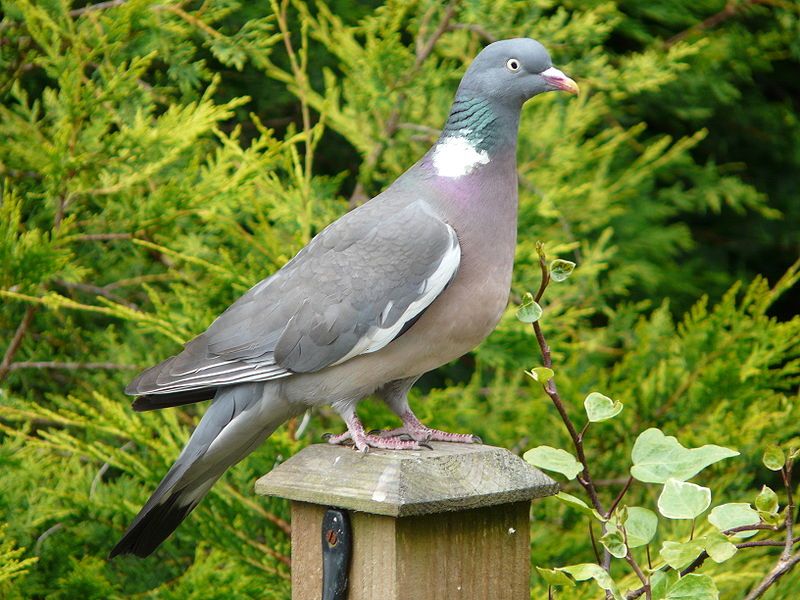
The common wood pigeon is a species of bird that is native to the western Palearctic region. It belongs to the family of doves and pigeons, and is one of the largest species in this family.
The wood pigeon is classified in the genus Columba, which is composed of a variety of closely related species, such as the rock dove. The common wood pigeon can be found in many different habitats, from woodland and farmland to urban areas and parks.
It is a large bird, with grey and white plumage, and a distinctive white patch on its neck and wings. Its diet consists mainly of seeds, fruits, and greens, although it will also feed on insects.
The wood pigeon is an important game bird in many parts of the world and is also popular with birdwatchers and wildlife enthusiasts.
| Kingdom | Animalia |
| Phylum | Chordata |
| Class | Aves |
| Order | Columbiformes |
| Family | Columbidae |
| Genus | Columba |
| Species | C. palumbus |
20. Rock Dove
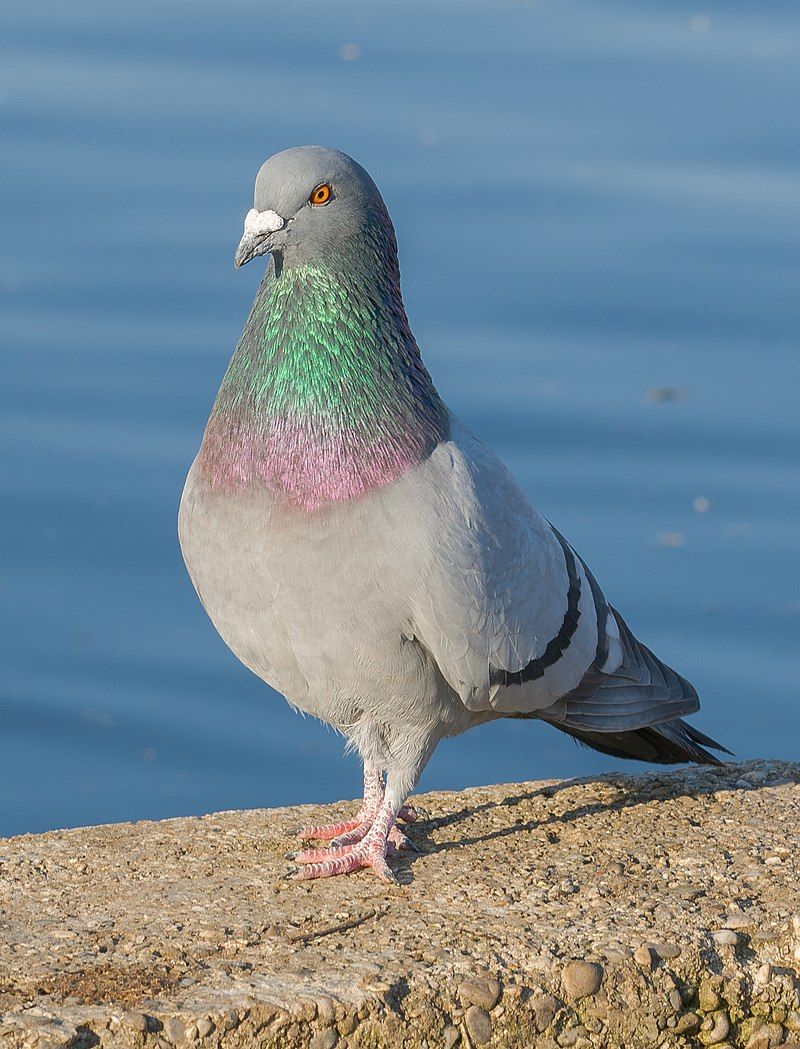
The rock dove, rock pigeon, or common pigeon is a species of bird that belongs to the Columbidae family. This species is often simply referred to as the “pigeon” in everyday language.
The domestic pigeon is a descendant of the rock dove, which is why they share many similar characteristics. Through domestication, people have bred and kept domestic pigeons as pets or for their meat and eggs.
However, some of these domestic pigeons have escaped and gone wild, leading to an increase in feral pigeon populations around the world. The feral pigeons are descendants of domestic pigeons, and are very similar to the rock dove in terms of size, appearance, and behavior.
Despite this, they are considered to be an invasive species in some parts of the world due to the impact they can have on the environment.
| Kingdom | Animalia |
| Phylum | Chordata |
| Class | Aves |
| Order | Columbiformes |
| Family | Columbidae |
| Genus | Columba |
| Species | C. livia |
21. Great Tit
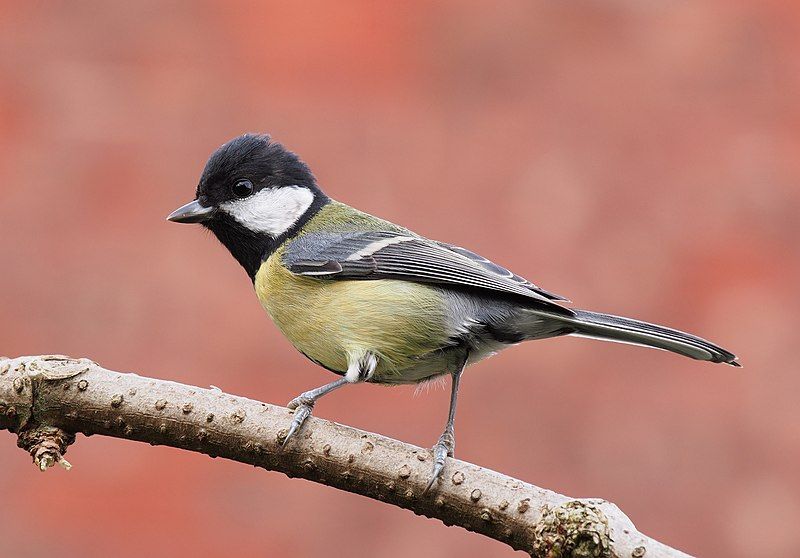
The great tit is a species of passerine bird belonging to the family, Paridae. This species is found in a wide range of habitats, including woodland, scrubland, farmland, parks, and even gardens.
It is especially abundant throughout Europe, the Middle East, Central Asia, and east across the Palearctic to the Amur River in eastern Siberia.
Its range also extends into parts of North Africa and the Himalayas. This species is a medium-sized bird, with a short tail and a large head, and is usually between 16-18 cm in length. The plumage is grey-blue on the upperparts, while the underparts are white.
The wings are black with white spots, and the tail is also black with white tips. The male has a black stripe on its head, while the female has a more greyish-brown head. The great tit is an omnivore, and its diet consists of insects, spiders, seeds, fruits, and nuts.
It feeds mainly on the ground and in trees and bushes and is known to be a very bold and fearless bird. It is vocal and easily attracted to bird feeders, where it can often be seen in large numbers.
Overall, the great tit is a widespread and common species that can be found in a variety of habitats and is a familiar sight in many parts of the world.
| Kingdom | Animalia |
| Phylum | Chordata |
| Class | Aves |
| Order | Passeriformes |
| Family | Paridae |
| Genus | Parus |
| Species | P. major |
22. Eurasian Tree Sparrow
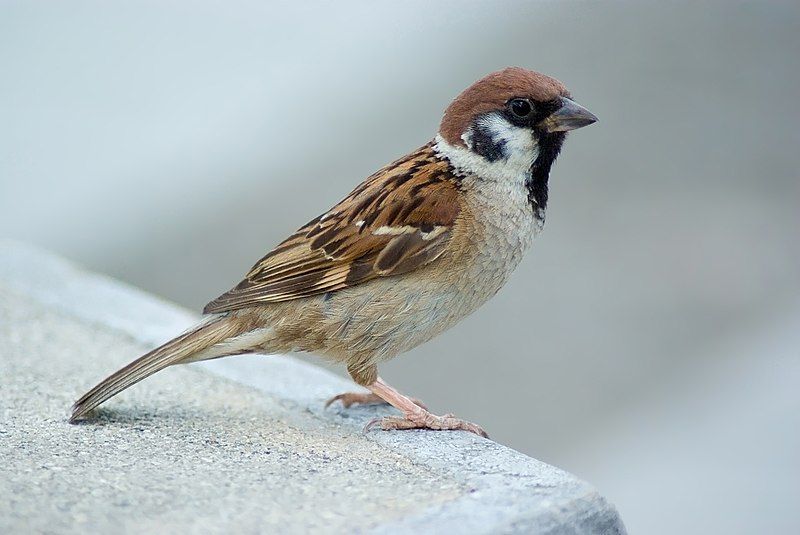
The Eurasian tree sparrow is a small bird belonging to the sparrow family. It is identifiable by its distinct plumage, which includes a rich chestnut-colored crown and nape, as well as a black patch on each pure white cheek.
Both males and females have the same coloration, while the young birds are slightly more dull in color, compared to the adults.
The Eurasian tree sparrow is widespread across Europe, Asia, and parts of North Africa, occurring in a variety of habitats including grasslands, woodlands, and urban areas. They feed mainly on seeds, but will also take small insects and other invertebrates.
They often nest in colonies and are known to have complex social behaviors. During the winter months, flocks of Eurasian tree sparrows can often be seen in agricultural fields, feeding on grain left behind by farmers.
| Kingdom | Animalia |
| Phylum | Chordata |
| Class | Aves |
| Order | Passeriformes |
| Family | Passeridae |
| Genus | Passer |
| Species | P. montanus |
Conclusion
The birds of Bucharest are a vital part of the city and its biodiversity. They provide a unique experience to the residents of the city and serve as an indicator of the city’s environment.
With the introduction of urban development and modernization, it is important to ensure that the birds of Bucharest are not forgotten and that their habitats are preserved.